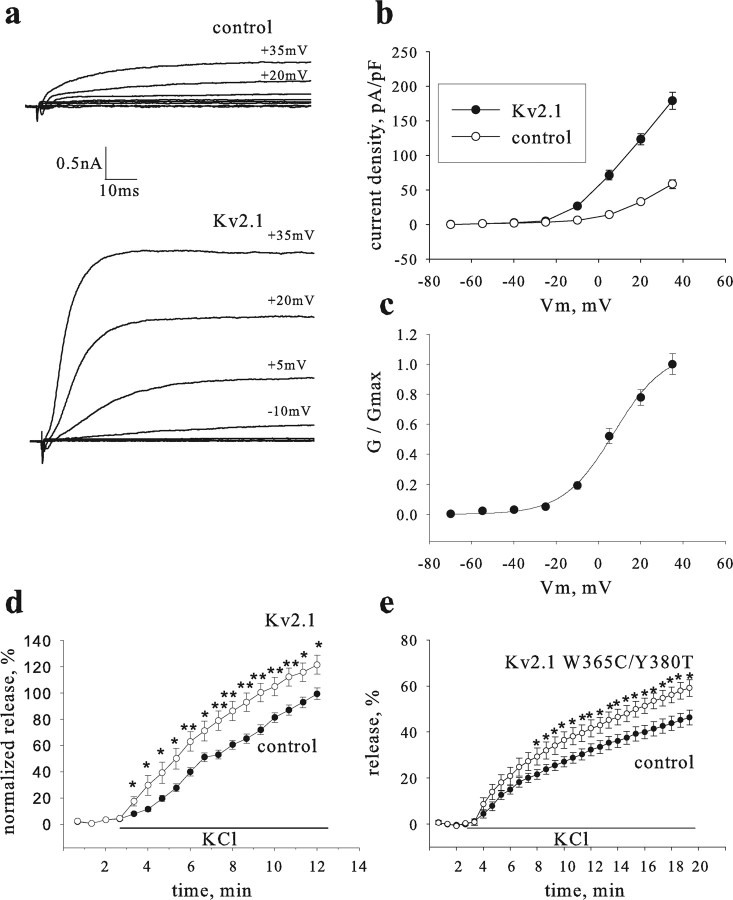Figure 2.
Kv2.1 enhances release induced by depolarization with high external KCl concentration. The enhancement is independent on channel conductance. a, Examples of whole-cell voltage-clamped currents recorded from a control PC12 cell transfected with proANF-GFP cDNA (top) and a cell cotrasfected with proANF-GFP and Kv2.1 cDNAs (bottom). Currents were evoked by a series of steps to different potentials (noted adjacent to trace) from a holding potential of −70 mV. b, Averaged current density–voltage relationships for control and Kv2.1 cells (n = 5 and 7, respectively). c, Activation curve for Kv2.1 cells. Normalized conductance (G/Gmax)–potential relationships were fitted to a Boltzmann equation, G/Gmax = 1/(1 + exp ((Va1/2 − V)/a), and yielded a Va1/2 (half-activation voltage) of 5.8 ± 2.26 mV and an a (slope factor) of 11.8 ± 0.42. d, Time course of release induced by depolarization with high 70 mm extracellular KCl from PC12 cells cotransfected with proANF-GFP and either Kv2.1 (Kv2.1; open circles; n = 19) or empty vector (control; filled circles; n = 17). Results are the summary of eight independent experiments. e, A pore mutant channel enhances release induced by depolarization. Cells were transfected with the mutant (Kv2.1W365C/Y380T; open circles; n = 10) or with the empty vector (control; filled circles; n = 11). *p < 0.05; **p < 0.001.

